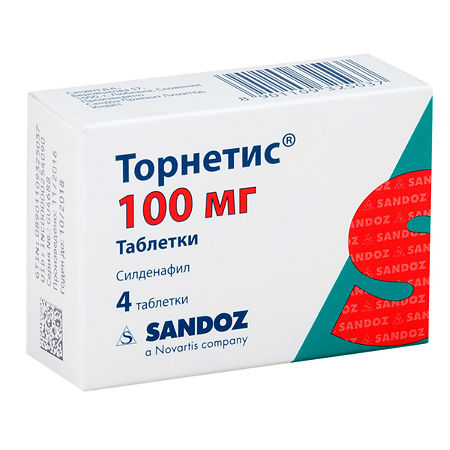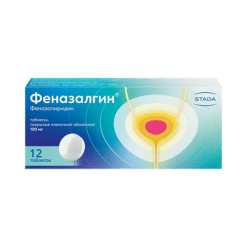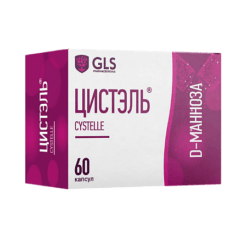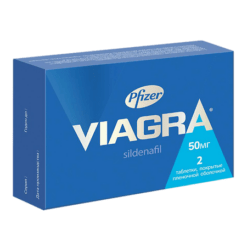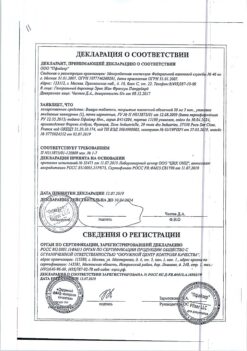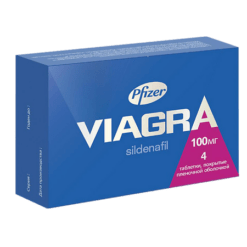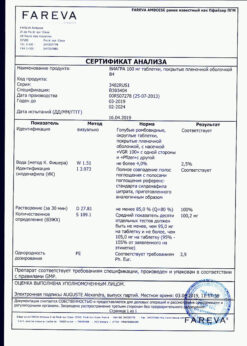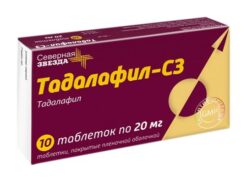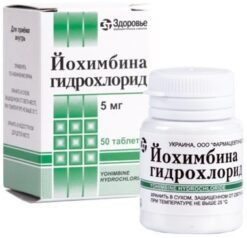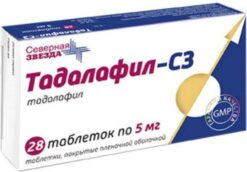No products in the cart.
Tornetis, tablets 100 mg 4 pcs
€1.00
Out of stock
(E-mail when Stock is available)
Description
Sildenafil is a powerful selective inhibitor of cGMP-specific phosphodiesterase type 5 (FDE-5). The realization of the physiological mechanism of erection is associated with the release of nitric oxide (NO) in the corpora cavernosa during sexual stimulation. This in turn leads to an increase in the level of cGMP, the subsequent relaxation of the smooth muscle tissue of the cavernous body and an increase in blood flow.
Sildenafil has no direct relaxant effect on the isolated human cavernous body, but it enhances the effect of nitric oxide (NO) by inhibiting FDE5, which is responsible for the breakdown of cGMP.
Sildenafil is selective against FDE-5 in vitro, its activity against FDE-5 exceeds activity against other known phosphodiesterase isoenzymes: FDE-6 – 10 times; FDE-1 – more than 80 times; FDE-2, FDE-4, FDE-7-FDE-11 – more than 700 times. Sildenafil is 4,000 times more selective against FDE-5 compared to FDE-3, which is very important because FDE-3 is one of the key enzymes in regulation of myocardial contractility.
The indispensable condition for effectiveness of sildenafil is sexual stimulation.
The use of sildenafil in doses up to 100 mg did not result in clinically significant ECG changes in healthy volunteers. The maximum decrease in BP in the supine position after sildenafil administration at a dose of 100 mg was 8.3 mm Hg, and BP was 5.3 mm Hg. A more pronounced but also transient effect on BP was observed in patients taking nitrates.
In some patients, 1 h after taking sildenafil at a dose of 100 mg, the Farnsworth-Munsel 100 test revealed a mild and transient impairment in the ability to distinguish shades of color (blue/green). These changes were absent 2 h after drug administration.
The impairment of color vision is thought to be caused by inhibition of FDE-6, which is involved in the transmission of light in the retina. Sildenafil has no effect on visual acuity, contrast perception, electroretinogram, intraocular pressure or pupil diameter.
Indications
Indications
Treatment of erectile dysfunction characterized by the inability to achieve or maintain a penile erection sufficient for satisfactory intercourse. Sildenafil is effective only with sexual stimulation.
Active ingredient
Active ingredient
Composition
Composition
Active ingredient:
microcrystalline cellulose 275.7 mg,
calcium hydrophosphate anhydrous 104.4 mg,
How to take, the dosage
How to take, the dosage
Ingestion, about 1 h before planned sexual activity. The single dose for adults is 50 mg once daily. Depending on efficacy and tolerability, the dose may be increased to 100 mg or decreased to 25 mg. The maximum single dose is 100 mg once daily.
In patients with severe renal impairment (CKI less than 30 ml/min) it is recommended to reduce the dose of Tornetis to 25 mg.
Because sildenafil excretion is reduced in patients with hepatic impairment, the recommended dose of Tornetis is 25 mg.
Tornetis dose adjustment is not necessary in elderly patients.
In co-administration with CYP3A4 isoenzyme inhibitors (erythromycin, saquinavir, ketoconazole, itraconazole) the starting dose of Tornetis should be 25 mg.
To minimize the risk of postural hypotension in patients taking alpha-adrenoblockers, Tornetis should be started only after hemodynamic stabilization has been achieved in these patients. A reduction in the starting dose of Tornetis should be considered.
Interaction
Interaction
Special Instructions
Special Instructions
In order to diagnose erectile dysfunction, determine its possible causes, and choose an appropriate treatment, a complete medical history must be taken and a thorough physical examination must be performed.
Sexual activity poses a certain risk in the presence of heart disease, so before starting any therapy for erectile dysfunction, a doctor should refer the patient to a cardiovascular examination.
The use of sildenafil is contraindicated in patients with heart failure, unstable angina pectoris, myocardial infarction or stroke within the last 6 months, hypotension (BP < 90/50 mm Hg).
Sildenafil has a systemic vasodilatory effect leading to a transient decrease in blood pressure, which is not clinically significant and has no consequences in most patients.
However, before prescribing Tornetis®, the physician should carefully evaluate the risk of possible adverse effects of vasodilatation in patients with related conditions, especially with sexual activity.
The increased susceptibility to vasodilators is seen in patients with left ventricular outflow tract obstruction (aortic stenosis, hypertrophic obstructive cardiomyopathy) and also with rare multiple systemic atrophy syndrome manifested by severe autonomic nervous system impairment of blood pressure regulation.
Because co-administration of sildenafil and alpha-adrenoblockers may lead to symptomatic hypotension in some sensitive patients, sildenafil should be used with caution in patients taking alpha-adrenoblockers.
In order to minimize the risk of postural hypotension in patients taking alpha-adrenoblockers, sildenafil should be started only after hemodynamic stabilization has been achieved in these patients.
It should be considered whether to reduce the initial dose of sildenafil. In addition, the physician should inform patients about what actions to take if symptoms of postural hypotension occur.
Sildenafil enhances the anti-aggregation effect of sodium nitroprusside (a nitric oxide donor) on human platelets in vitro. There is no information about the safety of sildenafil in patients with internal bleeding or active peptic ulcer, so it should be used with caution.
In some post-marketing and clinical studies using all FDE5 inhibitors, including sildenafil, a sudden reduction or loss of hearing in patients has been reported.
Contraindications
Contraindications
Side effects
Side effects
Nervous system: very common – headache; common – dizziness; infrequent – somnolence, hypoesthesia; rare – stroke, fainting; frequency unknown – transient ischemic attack, seizures, including recurrent ones.
Cardiovascular system: often – “hot flashes”; infrequent – palpitations, tachycardia; rare – increase or decrease of BP, myocardial infarction, atrial fibrillation; frequency unknown – ventricular arrhythmia, unstable angina, sudden death.
An organ of vision: often – visual impairment, impaired color vision; infrequent – conjunctival damage, impaired lacrimation; frequency unknown – anterior ischemic optical neuropathy, retinal vascular occlusion, visual field defects.
Hearing organ: infrequent – vertigo, tinnitus; rarely – deafness.
Respiratory system: often – nasal congestion; rarely – nasal bleeding.
Gastrointestinal disorders: frequent – dyspepsia; infrequent – vomiting, nausea, dry mouth.
Allergic reactions: infrequent – skin rash; frequency unknown – Stevens-Johnson syndrome, toxic epidermal necrolysis (Lyell’s syndrome).
Genital organs: frequency unknown – priapism, prolonged erection.
Others: rare – chest pain, fatigue.
Overdose
Overdose
Symptoms: headache, blood rushes to the face, dizziness, dyspepsia, nasal congestion, visual disturbances.
In studies in healthy volunteers, adverse events at a single dose of up to 800 mg were comparable to those with sildenafil at lower doses, but were more frequent.
Treatment: In case of overdose, standard symptomatic measures should be taken. Dialysis does not accelerate excretion of the drug, since sildenafil is firmly bound to plasma proteins and is not excreted in the urine.
Pregnancy use
Pregnancy use
Similarities
Similarities
Additional information
| Shelf life | 2 years |
|---|---|
| Conditions of storage | At a temperature not exceeding 25 °C |
| Manufacturer | Sandoz Private Limited, India |
| Medication form | pills |
| Brand | Sandoz Private Limited |
Related products
Buy Tornetis, tablets 100 mg 4 pcs with delivery to USA, UK, Europe and over 120 other countries.

